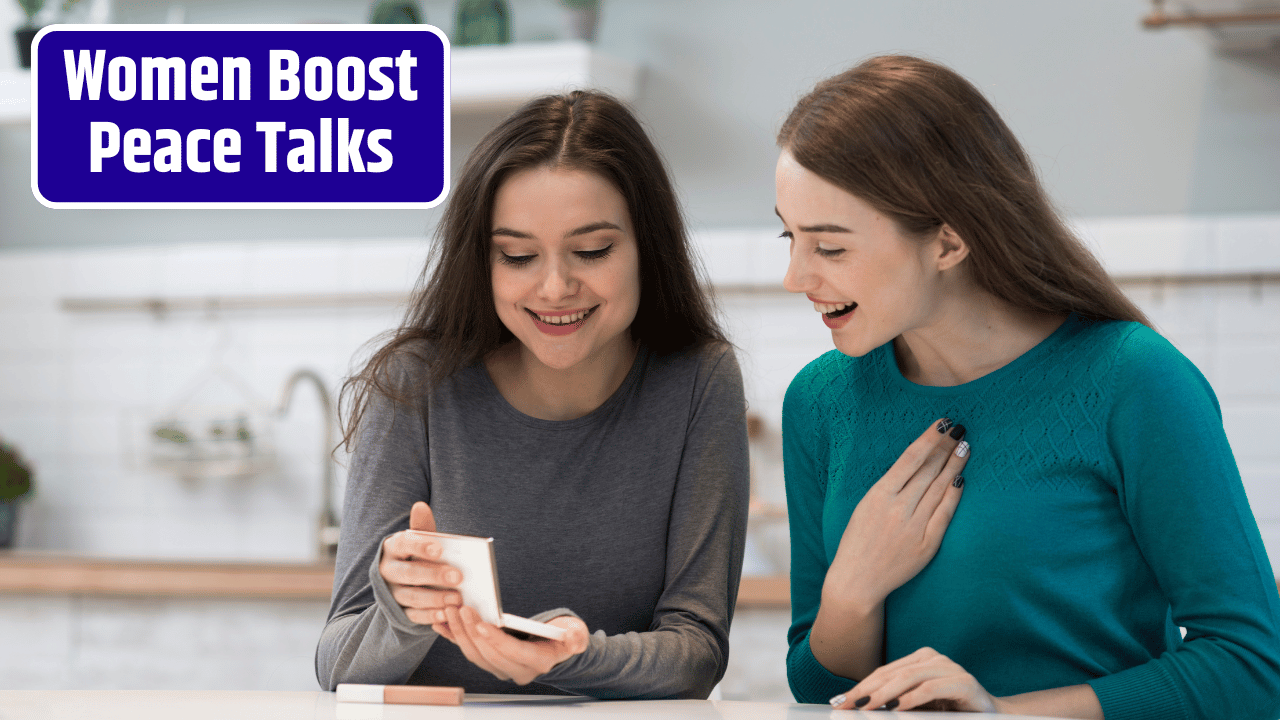It’s not happening in Geneva or New York. It’s not behind podiums, or inside glass-walled negotiation rooms with translators and tight-lipped diplomats.
Nope. Real peace—the kind that sticks, the kind you can actually feel—is being rebuilt by women. In village halls. In schoolyards. In bombed-out community centers with no electricity but plenty of stubborn hope.
And in 2025, it’s these women—teachers, mothers, ex-fighters, farmers—who are slowly, quietly, changing the rules of post-conflict recovery. One meeting, one compromise, one stitched-up community at a time.
Table of Contents
They Were Never Just Survivors
Let’s backtrack for a second. Whenever conflict rips through a region—whether it’s civil war, ethnic violence, occupation—you hear the same framing: “Women and children are the most affected.”
And while that’s true (they are), the story tends to end there. Cue a sad statistic, maybe a grainy photo, and silence.
But here’s what doesn’t get enough attention: women aren’t just suffering the fallout of war. They’re driving recovery.
Across dozens of countries, from northern Nigeria to eastern Ukraine, women are forming councils, opening informal schools, running underground clinics, and mediating between rival groups where formal peace has failed.
They didn’t wait for permission. They just got to work.
Peacebuilding at Eye-Level
Unlike top-down peace agreements that often exclude local voices entirely, women-led community peacebuilding is bottom-up, personal, and deeply embedded in daily life.
Here’s how it looks on the ground:
| Country | Local Peacebuilding Action | Led By |
|---|---|---|
| DR Congo | Inter-ethnic women’s dialogue circles | Rural schoolteachers & nurses |
| Colombia | Restorative justice programs for ex-combatants | Former FARC female fighters |
| Afghanistan | Secret girls’ education hubs & community mediation | Grandmothers and midwives |
| South Sudan | Cattle-raiding ceasefire negotiations between clans | Women’s church collectives |
| Palestine | Trauma healing and youth de-escalation workshops | Young women activists and psychologists |
These aren’t projects imported from the West. They’re locally owned, culturally fluent, and often more trusted than government or NGO workers. Because these women are the community—they’re not outsiders in vests.
Why It Works
You know that auntie who can settle any family feud over chai? Imagine her with a training in conflict mediation. That’s the vibe.
Women peacebuilders aren’t just working around violence—they’re cutting into its root causes. Poverty, trauma, broken trust, stolen education, sexual violence, disempowerment. They address what militarized approaches won’t touch.
And let’s be real: when women build peace, they don’t just talk about who puts down weapons. They talk about water, land, schools, trauma, identity. Things that actually hold a community together.
Global Networks, Local Muscle
What’s different in 2025 is that these local leaders are finally getting global backup.
A growing coalition of NGOs—including Kvinna till Kvinna, Search for Common Ground, and Women for Women International—is pumping funds, training, and digital tools directly into local women-led initiatives, skipping the bloated middle layers.
Some highlights:
- Whatsapp-based peace coordination hubs for quick response to flare-ups in rural Kenya
- Radio storytelling series in northern Iraq, airing reconciliation stories told by women
- Trauma-informed training programs for female mediators in Sri Lanka and Myanmar
- Microgrants for women to host cross-community meals after ceasefire deals
It’s not flashy. But it’s real. And that’s why it’s working.
Barriers? Plenty. But Not Enough to Stop Them
Let’s not pretend this is easy. These women are often:
- Threatened by extremist groups
- Ignored by male-dominated local councils
- Underpaid (or unpaid)
- Burned out from doing five jobs at once: mother, activist, therapist, diplomat, and sometimes breadwinner
And yet… they keep going. Not because they’re superheroes. But because they know if they don’t do it, no one else will.
One South Sudanese peace worker said it like this:
“The men fight. The leaders leave. But we stay. We clean the blood, we bury the dead, and then we start talking to each other again.”
How You Can Actually Help
No savior complex required. But if you want to move from reading to doing, here’s a few real options:
- Donate to grassroots collectives (not just big-name NGOs). Look for verified local partners—many are now listed on platforms like Peace Direct.
- Amplify their voices. Share their stories. Not in a performative way—but in a way that educates others and shifts narratives.
- Push for funding shifts. If you’re in policy, philanthropy, or advocacy, demand more money go directly to local women’s groups. No more middleman nonsense.
- Support education and tech access. Many women peacebuilders are working with little more than a cracked smartphone and mobile data. Infrastructure matters.
FAQs
Why aren’t women always included in formal peace processes?
Patriarchy, plain and simple. Plus, formal negotiations often prioritize political and military power over grassroots legitimacy—which women often hold.
Is this approach scalable?
Yes, but only with proper funding and flexibility. Localized peace work doesn’t scale like a product—it adapts by context. That’s the strength.
What’s the risk?
There’s always a risk when challenging the status quo. Many women face harassment or worse. That’s why networks, protection protocols, and international visibility matter.
Are there men involved too?
Yes. Many women-led initiatives include male allies, especially young men. But the leadership? That’s finally shifting.














